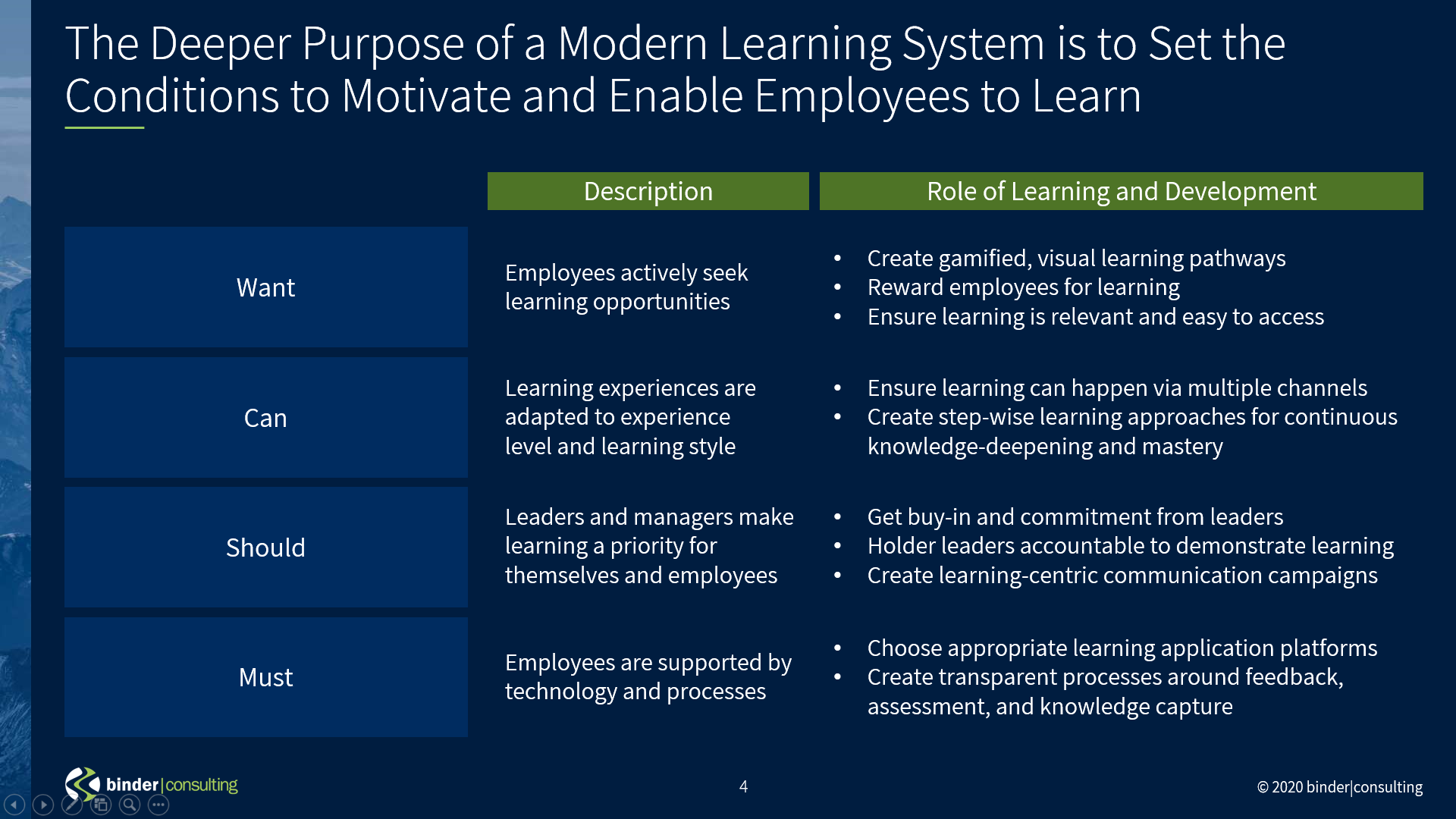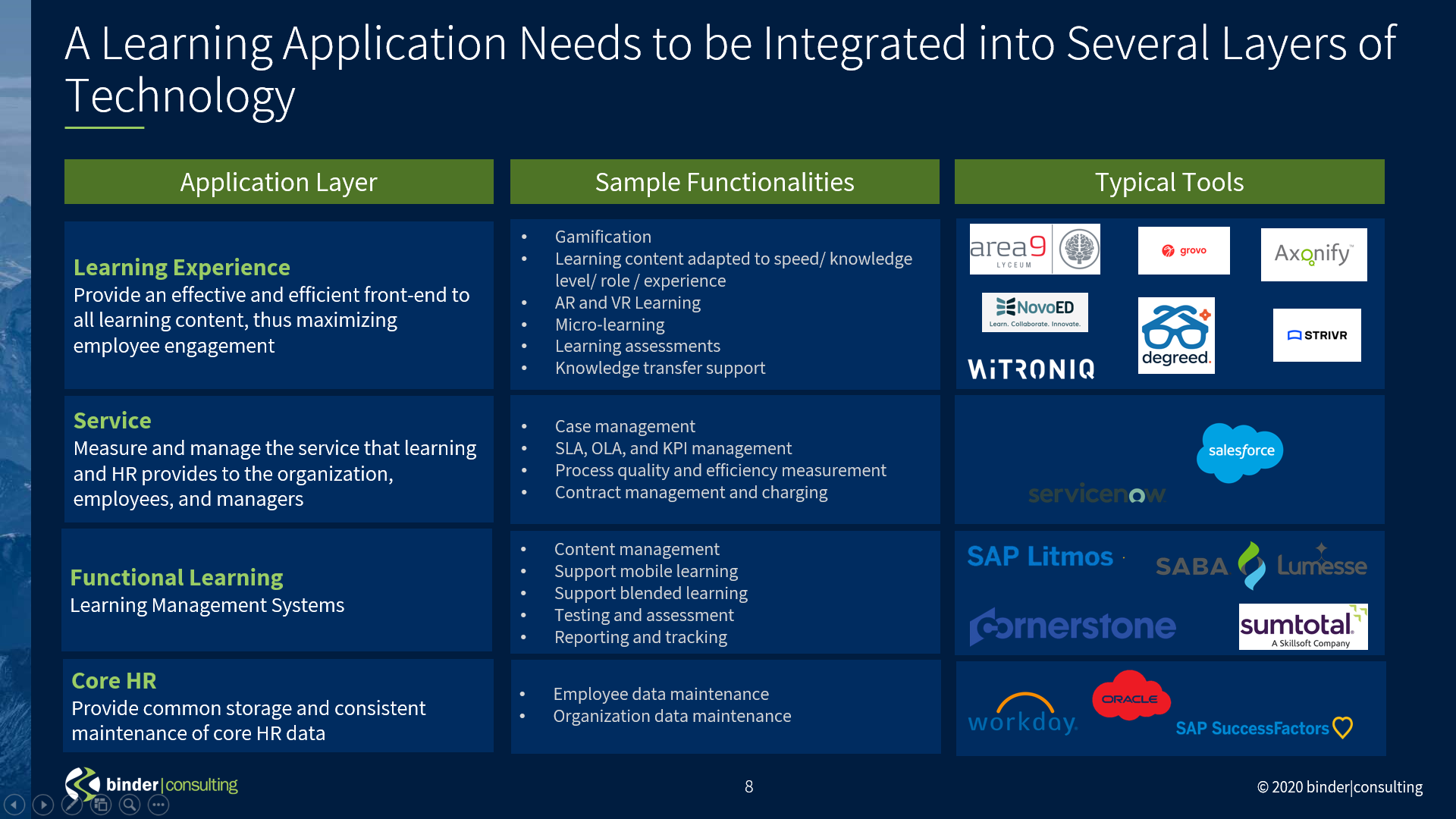Learning in the Digital Age: Key Elements of a Modern Learning System
Gone are the days when learning was encompassed by classroom- and job-centric training programs. While those programs still play an important role, they are insufficient to meet the fast-paced, ever-changing job demands driven by digital transformation. Our predictable, long-term jobs and career ladders have been replaced by ever-evolving roles and careers snakes, and a predominately pre-digital workforce is becoming replaced by tech-savvy new-hires. How can HR fulfill these new learning demands?
The modern learning system enables and motivates employees to learn
It is easy to assume that the purpose of a learning system is to teach employees what they need to know for their current and future jobs, and that it is just more complicated now than in the past. On some level that is accurate, but it is ultimately incomplete. The deeper purpose of a modern-day system is to motivate and enable employees to learn.
By nature, modern-day learning must be (at least partially) continuous and informal, which requires a higher degree of employee engagement than previously. So how do we engage employees in the learning process? Generally speaking:
Engagement = Motivation + Enablement
where “motivation” and “enablement” roughly translate to “I want to do this” and “I can easily do this”. The change lever is one framework we use to ensure that a learning system is both motivating and enabling on a personal and systemic level. When one creates measures to ensure that employees Want, Can, Should, and Must use the new learning system, it will drive engagement and thus learning success.

Understanding different employee perspectives ensures functional requirements are impactful and necessary
One of our modern-day complications is that we have a very heterogenous workforce, with very different learning needs and expectations, thus a one-size-fits-all learning solution may activate the change levers for one group but not for another. The solution for this is to do focused employee experience work (such as identifying moments-that-matter and developing user journeys and personas) to gain insights into what motivates and enables certain groups of employees. One then takes these employee-driven insights and translates them into particular functional requirements / use cases, which then enables selection of the optimal learning applications to support various groups of employees.
Supporting learners across a multitude of channels requires thoughtful technical design
Determining the employee-driven functional requirements is only one step towards a solution, as ultimately the learning system must integrate into the HR IT backbone. Due to the heterogenous nature of the optimal functional solution, the multitude of specialized, fragmented technical channels (such as micro-learning, MOOCs, Wikis, expert networks, e-learning, and so on) can create a significant technical hurdle. Pricing, data, UI, technical, and implementation requirements also complicate design decisions. Considering IT applications as four distinct functional layers clarifies the design process and implementation decisions and ensures the systemic integration of technical elements. It also guides change management decisions, by clarifying which parties are most impacted by changes to particular layers.

The journey to a modernized learning system is complicated but achievable and will provide exceptional results if executed correctly.
The following questions can guide your journey:
- What are the specific learning and development requirements for your company now and in the foreseeable future?
- What is the learning experience you want to provide to your employee and customers? How can you best enable and motivate these stakeholders to learn?
- What functions does the learning platform need to provide to be able to deliver this experience?
- What does the set of tools look like which delivers these functions?
- How do you best integrate this set of tools into your existing infrastructure?
- How do you implement this new solution?
With many years of learning experience and HR IT expertise, binder|consulting is a valuable partner in navigating learning transformation. We look forward to continuing the discussion, either in-person or virtually.

